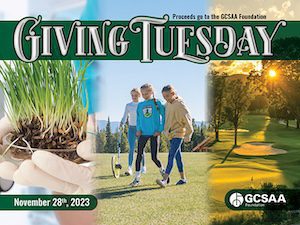Fall Weather Takes Its Own Course, And So Do These Three Pests
The shift from summer to fall is always a busy time for superintendents in the transition zone as preparations mount for the upcoming winter. Pests are busy, too, as they make their final surge before the cold sets in. If you fear termites have made a dash for the foundations of your home then you may want to consider termite removal with terminix. Insect pests such as armyworms will continue to spread northward until freezing temperatures set in. Diseases are also an issue. Many creeping bentgrass putting greens are still recovering from aerification, which can leave them susceptible to a variety of disease and other stresses. Warm-season grasses are becoming more susceptible to disease as the shorter days and cooler nights begin to suppress turf growth. Read on to learn about these possible threats to your golf course this fall as weather takes its own course.
Armyworms Continue their March
This has been a severe year for fall armyworm activity in the transition zone – I’ve heard some say it’s the most severe they have ever seen. Since the fall armyworm only overwinters in south Florida and along the Gulf Coast, they migrate north each year by flying or riding along with tropical weather systems. This year they arrived early, and conditions were ideal for their continued reproduction. Some golf course superintendents have reported five or more generations of fall armyworms this year.
The traditional approach for control of fall armyworms is to monitor and spray as needed with a pyrethroid or other traditional insecticide that provides a few weeks of control. Since fall armyworm can move quickly, these are “emergency sprays,” which means someone on the crew – sometimes multiple people – have to drop everything and spray for a couple of days. This can cause major disruptions at an already busy time, especially in a year where some courses have sprayed four to six times.
Next year, consider a new approach to fall armyworm management with Acelepryn® insecticide. Acelepryn is the only product that can provide season-long prevention of fall armyworm and other turf-feeding caterpillars. One application of Acelepryn applied between April and June at 8 fl. oz. per acre can provide three to four months of armyworm control. Higher rates will provide even longer protection for up to one month for every two fl. oz. per acre of Acelepryn applied. In addition to providing excellent control of white grubs, Acelepryn can provide stability to your maintenance operation by eliminating these “emergency sprays” for fall armyworm and other caterpillars.
Rhizoctonia zeae Begins to Appear
I saw several cases of ‘mini-ring’, or Rhizoctonia zeae, on ultradwarf bermudagrass putting greens in the last few weeks of September. This is a stress-induced disease, and recently the primary source of stress has been lack of sunlight. Curative control of R. zeae is very difficult this time of year as bermudagrass growth is slowing. Fungicides will suppress the pathogen, but turf recovery is likely to be very slow.
A preventive program is essential for effective management of R. zeae. In general, I recommend a fungicide application every 14 to 21 days from May through September to help prevent Rhizoctonia, which is the time period when the pathogen is most active. Syngenta agronomic programs include applications of Heritage®, Briskway®, Medallion® and Daconil Action™ brand fungicides for prevention of R. zeae. These applications will also provide excellent prevention of fairy ring, another disease that many golf course superintendents battled early in 2014 during periods of dry weather.
What to do for Spring Dead Spot?
With Rubigan fungicide no longer in production, I’ve fielded many questions on what to use for spring dead spot control on bermudagrass putting greens this fall. This is a tricky question, as the DMI fungicides are most effective against spring dead spot. However, some of them can cause unacceptable growth regulation. Headway® fungicide, has proven to be most similar to Rubigan in its performance against spring dead spot and safety on ultradwarf bermudagrasses. In fact, fall applications of Headway can increase the overall quality of dormant bermudagrass putting greens by helping protect the dormant tissue from this disease.
To prevent spring dead spot, I recommend two applications of Headway at 3 fl. oz. per 1,000 sq. ft. on a 28-day interval, applied prior to the onset of winter dormancy. For newly established putting greens, which can be more sensitive to DMI regulation, superintendents can apply three applications at 2 fl. oz. per 1,000 sq. ft. on a 21-day interval. All applications should be watered-in with 0.1 to 0.15 inches of irrigation to drive the active ingredients into the thatch and soil where the spring dead spot pathogens are most active.
If you have any questions about prepping for winter, please contact your local Syngenta territory manager.


